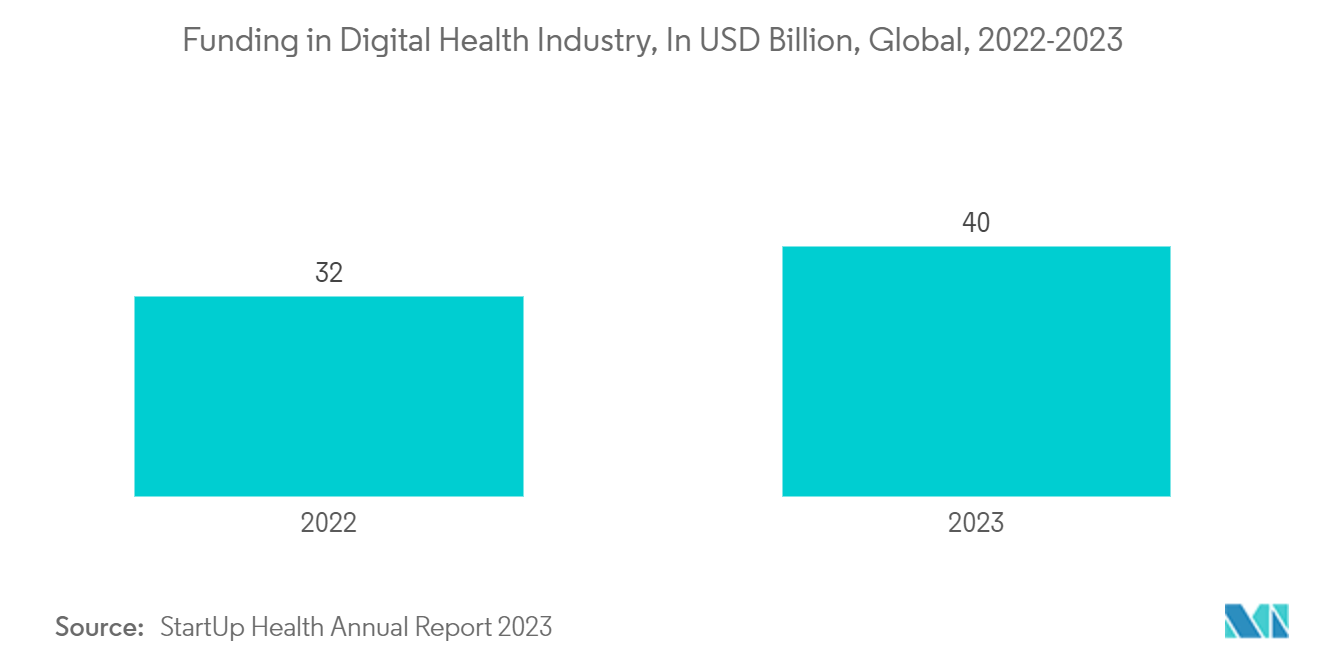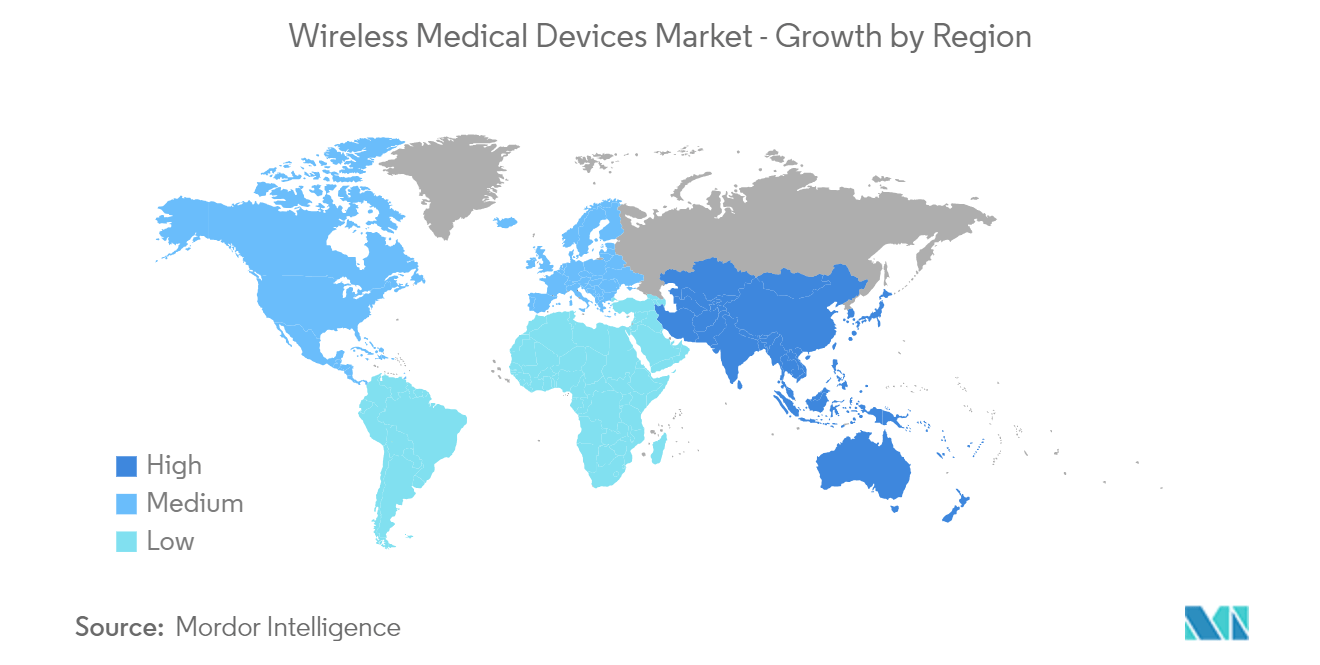Market Trends of Wireless Medical Device Industry
The External Devices Segment is Expected to Hold Significant Market Share During the Forecast Period
External wireless medical devices are used for vital sign monitoring, diagnosis of certain diseases, and, in some cases, treatment of diseases. Factors such as increasing technological advancements in external wireless medical devices and increasing government initiatives to improve wireless medical device adoption are expected to drive the growth of the segment over the forecast period.
The technological advancements in external wireless medical devices are expected to increase their utilization, which may drive the market's growth over the forecast period. For instance, in August 2022, SmartCardia launched its 7-lead cardiac monitoring patch in India. This state-of-the-art patch monitor combines medical wearable technology with artificial intelligence (AI) to provide predictive and personalized patient insights through remote monitoring. Similarly, in April 2022, Biotricity launched the commercial sales of its US Food and Drug Administration (FDA) cleared, wireless wearable cardiac monitoring device, Biotres. Biotresis is the company’s revolutionary technology that represents the future of remote patient monitoring and the delivery of real-time diagnostic data.
Furthermore, the increasing government initiatives to improve the adoption of wireless medical devices are also expected to drive market growth. For instance, in August 2022, the Medical Device Innovation Consortium's (MDIC) initiative for digital health was announced in the United States. The initiative provided a chance to concentrate additional efforts on software solutions for medical devices, mobile medical applications, interoperability, wireless medical devices, patient-generated health data, and in-silico modeling. Hence, with the implementation of such initiatives, the segment is expected to witness strong growth.
Thus, the increasing technological advancements in external wireless medical devices and rising government initiatives to improve their adoption are expected to drive the growth of the segment over the forecast period.

North America is Expected to the Hold Largest Market Share During the Forecast Period
North America is expected to hold the largest market share in the global wireless medical devices market owing to factors such as the increasing adoption of wireless medical devices and rising strategic activities such as product launches.
The rising adoption of digital health technology in the United States is expected to drive the growth of the market studied over the forecast period. For instance, in February 2022, the Department of Health and Human Services, via the Health Resources and Services Administration, awarded USD 55 million to 29 HRSA-funded health centers to increase healthcare access and quality for underserved residents through virtual care such as telehealth, remote patient monitoring, wireless medical devices, and health information technology platforms. Hence, such government initiatives are expected to drive the growth of the market studied over the forecast period.
Furthermore, increasing strategic activities such as product launches are also expected to drive the growth of the market studied over the forecast period. In April 2022, Clarius Mobile Health, one of Canada’s medical technology companies, received Health Canada’s approval for its third-generation product line of wireless ultrasound scanners that can wirelessly connect to the clinician’s Apple or Android smart devices with an AI-powered application. Similarly, in August 2023, GE HealthCare launched a new wireless ultrasound imaging system, Vscan Air. Clinicians can use this system to view clear cardiac and vascular images at the point of care. It also helps them streamline workflows and eliminate overloading traditional radiology resources. Furthermore, Fractus, a healthcare technology company, launched a wireless implantable device, revolutionizing the remote monitoring of patients by doctors and boosting the uptake of telehealth services by leveraging wireless connectivity.
Thus, increasing adoption of digital health and strategic activities such as product launches are expected to drive the wireless medical devices market in North America over the forecast period.



